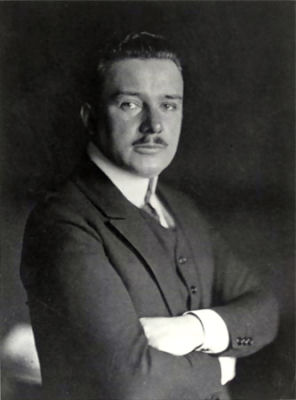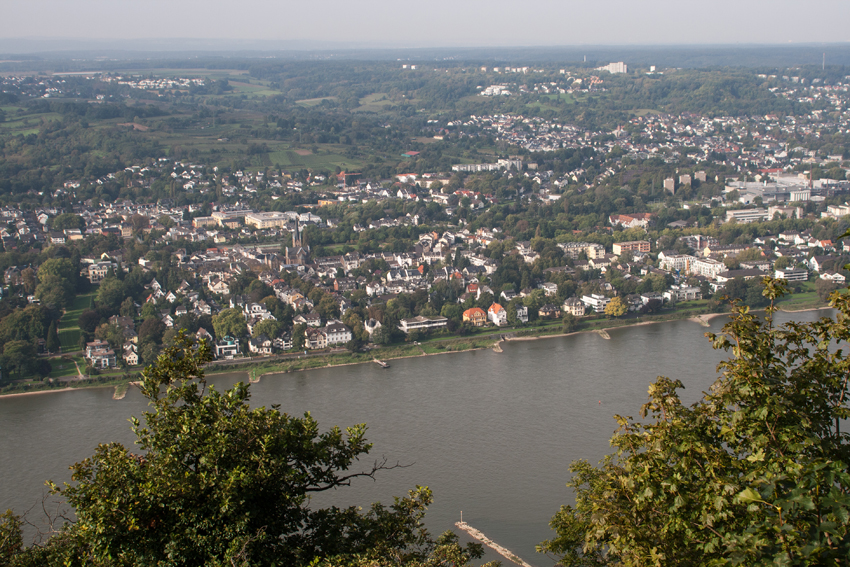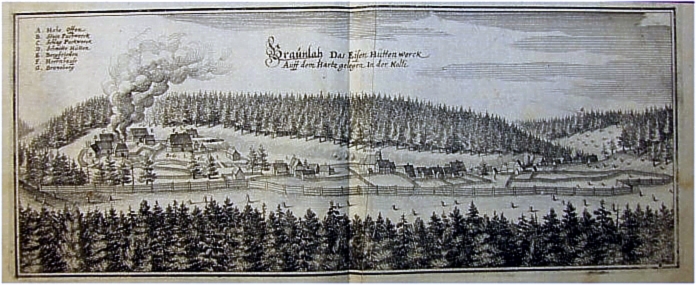|
Albin Müller
Albin Camillo Müller (13 December 1871 – 2 October 1941), also known as Albinmüller, was a German architect and designer active in Darmstadt. In 1906 he was appointed to the Darmstadt Artists' Colony, where he became the lead architect after Joseph Maria Olbrich's death (1908). In 1907 he was appointed a professor, and from 1907 to 1911 taught Applied Arts. In 1918 along with Kasimir Edschmid, Albinmüller was appointed the President of the newly created Art Council in Darmstadt. In 1926, Müller was appointed architect of the ''Deutsche Theaterausstellung'' in Magdeburg. In 1934 he turned to landscape painting and also worked as a writer. Buildings * Garden pavilion on the III. German Art Trade Exhibition Dresden 1906 * Exhibition buildings for applied art and exhibition buildings for architecture at the Hessisches Landesausstellung 1908 in Darmstadt (not preserved) * Villa for the manufacturer W. Emmelius in Bad Godesberg, Rheinallee 32 (1910–1911) * Own dwelling house i ... [...More Info...] [...Related Items...] OR: [Wikipedia] [Google] [Baidu] |
Germans
, native_name_lang = de , region1 = , pop1 = 72,650,269 , region2 = , pop2 = 534,000 , region3 = , pop3 = 157,000 3,322,405 , region4 = , pop4 = 21,000 3,000,000 , region5 = , pop5 = 125,000 982,226 , region6 = , pop6 = 900,000 , region7 = , pop7 = 142,000 840,000 , region8 = , pop8 = 9,000 500,000 , region9 = , pop9 = 357,000 , region10 = , pop10 = 310,000 , region11 = , pop11 = 36,000 250,000 , region12 = , pop12 = 25,000 200,000 , region13 = , pop13 = 233,000 , region14 = , pop14 = 211,000 , region15 = , pop15 = 203,000 , region16 = , pop16 = 201,000 , region17 = , pop17 = 101,000 148,00 ... [...More Info...] [...Related Items...] OR: [Wikipedia] [Google] [Baidu] |
Darmstadt
Darmstadt () is a city in the States of Germany, state of Hesse in Germany, located in the southern part of the Frankfurt Rhine Main Area, Rhine-Main-Area (Frankfurt Metropolitan Region). Darmstadt has around 160,000 inhabitants, making it the fourth largest city in the state of Hesse after Frankfurt am Main, Wiesbaden, and Kassel. Darmstadt holds the official title "City of Science" (german: link=no, Wissenschaftsstadt) as it is a major centre of scientific institutions, universities, and high-technology companies. The European Organisation for the Exploitation of Meteorological Satellites (EUMETSAT) and the European Space Operations Centre (ESOC) are located in Darmstadt, as well as Gesellschaft für Schwerionenforschung, GSI Centre for Heavy Ion Research, where several chemical elements such as bohrium (1981), meitnerium (1982), hassium (1984), darmstadtium (1994), roentgenium (1994), and copernicium (1996) were discovered. The existence of the following elements were also ... [...More Info...] [...Related Items...] OR: [Wikipedia] [Google] [Baidu] |
Darmstadt Artists' Colony
The Darmstadt Artists’ Colony refers both to a group of Jugendstil artists as well as to the buildings in Mathildenhöhe in Darmstadt in which these artists lived and worked in the late 19th and early 20th centuries. The artists were largely financed by patrons and worked together with other members of the group who ideally had concordant artistic tastes. UNESCO recognized the Mathildenhöhe artists' colony in Darmstadt as a World Heritage Site in 2021, because of its testimony to early modern architecture and landscape design, and its influence in the reform movements of the early 20th century. Founding The artists’ colony was founded in 1899 by Ernest Ludwig, Grand Duke of Hesse. His motto was: "" ("My Hessian land shall flourish and in it, the art"), and he expected the combination of art and trade to provide economic impulses for his land. The artists’ goal was to be the development of modern and forward-looking forms of construction and living. To this end, Ernst Lu ... [...More Info...] [...Related Items...] OR: [Wikipedia] [Google] [Baidu] |
Joseph Maria Olbrich
Joseph Maria Olbrich (22 December 1867 – 8 August 1908) was an Austrian architect and one of the Vienna Secession founders. Early life Olbrich was born in Opava, Austrian Silesia (now Czech Republic), the third child of Edmund and Aloisia Olbrich. He had two sisters, who died before he was born, and two younger brothers, John and Edmund. His father was a prosperous confectioner and wax manufacturer who also owned a brick works, where Olbrich's interest in the construction industry has its early origin. Career Olbrich studied architecture at the University of Applied Arts Vienna (''Wiener Staatsgewerbeschule'') and the Academy of Fine Arts Vienna, where he won several prizes. These included the Prix de Rome, for which he traveled in Italy and North Africa. In 1893, he started working for Otto Wagner, the Austrian architect, and probably did the detailed construction for most of Wagner's Wiener Stadtbahn (Metropolitan Railway) buildings. In 1897, Gustav Klimt, Olbrich, Josef ... [...More Info...] [...Related Items...] OR: [Wikipedia] [Google] [Baidu] |
Magdeburg
Magdeburg (; nds, label=Low Saxon, Meideborg ) is the capital and second-largest city of the German state Saxony-Anhalt. The city is situated at the Elbe river. Otto I, the first Holy Roman Emperor and founder of the Archdiocese of Magdeburg, was buried in the city's cathedral after his death. Magdeburg's version of German town law, known as Magdeburg rights, spread throughout Central and Eastern Europe. In the Late Middle Ages, Magdeburg was one of the largest and most prosperous German cities and a notable member of the Hanseatic League. One of the most notable people from the city is Otto von Guericke, famous for his experiments with the Magdeburg hemispheres. Magdeburg has been destroyed twice in its history. The Catholic League sacked Magdeburg in 1631, resulting in the death of 25,000 non-combatants, the largest loss of the Thirty Years' War. During the World War II the Allies bombed the city in 1945 and destroying much of it. After World War II the city belonged t ... [...More Info...] [...Related Items...] OR: [Wikipedia] [Google] [Baidu] |
Bad Godesberg
Bad Godesberg ( ksh, Bad Jodesbersch) is a borough ('' Stadtbezirk'') of Bonn, southern North Rhine-Westphalia, Germany. From 1949 to 1999, while Bonn was the capital of West Germany, most foreign embassies were in Bad Godesberg. Some buildings are still used as branch offices or consulates. Geography Bad Godesberg is located along the hills and cliffs of the west bank of the Rhine river, in west central Germany. Godesberg is also the name of the steep hill, of volcanic origin, on the top of which are the ruins of the Godesburg, a castle destroyed in 1583 during the Cologne War. History The following events occurred, per year: * 722 - First official record of the town, which was named after a nearby mountain, the Woudenesberg (later Godesberg), a basalt cone where the Ubii, a Germanic tribe, worshipped the god Wotan. * 1210 - On 15 October, Archbishop of Cologne Dietrich I lays the foundation stone of the Godesburg fortress on the Godesberg mountain. * 1583 - On 17 Decemb ... [...More Info...] [...Related Items...] OR: [Wikipedia] [Google] [Baidu] |
Braunlage
Braunlage () is a town and health resort in the Goslar district of Lower Saxony in Germany. Situated within the Harz mountain range, south of the Brocken massif, Braunlage's main business is tourism, particularly skiing. Nearby ski resorts include the Sonnenberg and the slopes on the Wurmberg. Geography Braunlage is located on the Warme Bode, a headstream of the river Bode, close to the border with Elend in the state of Saxony-Anhalt. The municipal area stretches along the south-eastern rim of the Harz National Park from an elevation of up to at the summit of the Wurmberg. Other peaks in the vicinity include the Achtermannshöhe and the Hahnenklee Crags. Districts The town consists of three districts: * Braunlage proper * Hohegeiß*, incorporated on 1 July 1972 * Sankt Andreasberg**, incorporated on 1 November 2011 * with the village of Königskrug ** with the villages of Sonnenberg, Oderhaus, Oderbrück, Oderberg, Odertaler Sägemühle and Silberhütte Transportation ... [...More Info...] [...Related Items...] OR: [Wikipedia] [Google] [Baidu] |
Niesky
Niesky ( Sorbian and pl, Niska, cz, Nízké) is a small town in Upper Lusatia in eastern Saxony, Germany. It has a population of about 9,200 (2020) and is part of the district of Görlitz. Historically considered part of Upper Lusatia, it was also part of Lower Silesia from 1815 to 1945. History The town was founded in 1742 by Moravian immigrants. As members of the Moravian Church, they fled from persecution in their Catholic homeland. The name ''Niesky'' is the Germanised version of the Czech word ''nízký'' ("low"). In 1776, at the age of 12, Benjamin Henry Boneval Latrobe, future designer of the United States Capitol, as well as of the Baltimore Basilica, was sent to the Moravian School at Niesky. Niesky was administered by the Moravian Church until 1892, when a separate civil administration was established. In 1931 it obtained a coat of arms, and in 1935 it was granted town rights. In 1935 a Catholic church was opened. In 1926 the architect Konrad Wachsmann worked in ... [...More Info...] [...Related Items...] OR: [Wikipedia] [Google] [Baidu] |
19th-century German Architects
The 19th (nineteenth) century began on 1 January 1801 ( MDCCCI), and ended on 31 December 1900 ( MCM). The 19th century was the ninth century of the 2nd millennium. The 19th century was characterized by vast social upheaval. Slavery was abolished in much of Europe and the Americas. The First Industrial Revolution, though it began in the late 18th century, expanding beyond its British homeland for the first time during this century, particularly remaking the economies and societies of the Low Countries, the Rhineland, Northern Italy, and the Northeastern United States. A few decades later, the Second Industrial Revolution led to ever more massive urbanization and much higher levels of productivity, profit, and prosperity, a pattern that continued into the 20th century. The Islamic gunpowder empires fell into decline and European imperialism brought much of South Asia, Southeast Asia, and almost all of Africa under colonial rule. It was also marked by the collapse of the large S ... [...More Info...] [...Related Items...] OR: [Wikipedia] [Google] [Baidu] |
German Designers
German(s) may refer to: * Germany (of or related to) **Germania (historical use) * Germans, citizens of Germany, people of German ancestry, or native speakers of the German language ** For citizens of Germany, see also German nationality law **Germanic peoples (Roman times) * German language **any of the Germanic languages * German cuisine, traditional foods of Germany People * German (given name) * German (surname) * Germán, a Spanish name Places * German (parish), Isle of Man * German, Albania, or Gërmej * German, Bulgaria * German, Iran * German, North Macedonia * German, New York, U.S. * Agios Germanos, Greece Other uses * German (mythology), a South Slavic mythological being * Germans (band), a Canadian rock band * "German" (song), a 2019 song by No Money Enterprise * ''The German'', a 2008 short film * "The Germans", an episode of ''Fawlty Towers'' * ''The German'', a nickname for Congolese rebel André Kisase Ngandu See also * Germanic (other) * Germa ... [...More Info...] [...Related Items...] OR: [Wikipedia] [Google] [Baidu] |
1871 Births
Events January–March * January 3 – Franco-Prussian War – Battle of Bapaume: Prussians win a strategic victory. * January 18 – Proclamation of the German Empire: The member states of the North German Confederation and the south German states, aside from Austria, unite into a single nation state, known as the German Empire. The King of Prussia is declared the first German Emperor as Wilhelm I of Germany, in the Hall of Mirrors at the Palace of Versailles. Constitution of the German Confederation comes into effect. It abolishes all restrictions on Jewish marriage, choice of occupation, place of residence, and property ownership, but exclusion from government employment and discrimination in social relations remain in effect. * January 21 – Giuseppe Garibaldi's group of French and Italian volunteer troops, in support of the French Third Republic, win a battle against the Prussians in the Battle of Dijon. * February 8 – 1871 French legislative election elect ... [...More Info...] [...Related Items...] OR: [Wikipedia] [Google] [Baidu] |
1941 Deaths
Events Below, the events of World War II have the "WWII" prefix. January * January–August – 10,072 men, women and children with mental and physical disabilities are asphyxiated with carbon monoxide in a gas chamber, at Hadamar Euthanasia Centre in Germany, in the first phase of mass killings under the Action T4 program here. * January 1 – Thailand's Prime Minister Plaek Phibunsongkhram decrees January 1 as the official start of the Thai solar calendar new year (thus the previous year that began April 1 had only 9 months). * January 3 – A decree (''Normalschrifterlass'') promulgated in Germany by Martin Bormann, on behalf of Adolf Hitler, requires replacement of blackletter typefaces by Antiqua. * January 4 – The short subject ''Elmer's Pet Rabbit'' is released, marking the second appearance of Bugs Bunny, and also the first to have his name on a title card. * January 5 – WWII: Battle of Bardia in Libya: Australian and British troops de ... [...More Info...] [...Related Items...] OR: [Wikipedia] [Google] [Baidu] |








_(LOC)_-_Flickr_-_The_Library_of_Congress.jpg)
